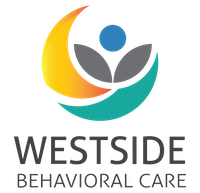Cognitive Therapy
Cognitive Therapy
Cognitive therapy & schema
 A schema in psychology is a cognitive thought pattern or behavior that helps organize and decipher different categories of information we receive from our external world. It can be explained as a mental structure of pre-existing ideas and beliefs, a psychological framework that represents different aspects of the external world and defines the relationship between them.
A schema in psychology is a cognitive thought pattern or behavior that helps organize and decipher different categories of information we receive from our external world. It can be explained as a mental structure of pre-existing ideas and beliefs, a psychological framework that represents different aspects of the external world and defines the relationship between them.
People develop schemas about almost everything– themselves, others, food, mechanical devices, career, etc. Schemas have a significant role in shaping our likes and dislikes, interpretation power, decision-making and actions. Schemas function like filters, intensifying and reducing the significance of different elements. It helps us classify different things and encode memories.
Changing Schemas
Schemas are adjusted or changed in two processes known as assimilation and accommodation. In the assimilation process, new information is integrated with pre-existing and preconceived schemas. In the accommodation process, existing schemas might change or new schemas might form as a person gets new experiences and learns new information.
Once a schema is accepted, people strive to sustain it. Everyone seems to develop their favorite schema and use it repetitively, thus reinforcing neural pathways in the brain. Such people will use these schemas first while interpreting the world before moving on to other schemas if the existing ones do not fit in well. The problem with schemas, however, is their ability to hinder people’s learning, leading to prejudice, stereotypes and gender expectations.
Types of Schemas
 Psychologists have identified the following types of schemas:
Psychologists have identified the following types of schemas:
- Person schemas relating to individual people.
- Social schemas relating to the society at large.
- Prototypes, which are idealized person schemas.
- Self-schemas relating to oneself.
- Event schemas relating to what happens in specific situations.
- Trait schemas relating to innate traits of people.
- Role schemas relating to behaviors in certain situations.
- Object schemas relating to inanimate objects
A person could also develop schemas after a traumatic event, which may warp a person’s perception of the world. Such patterns are unhealthy and may require professional help from a cognitive therapist.
